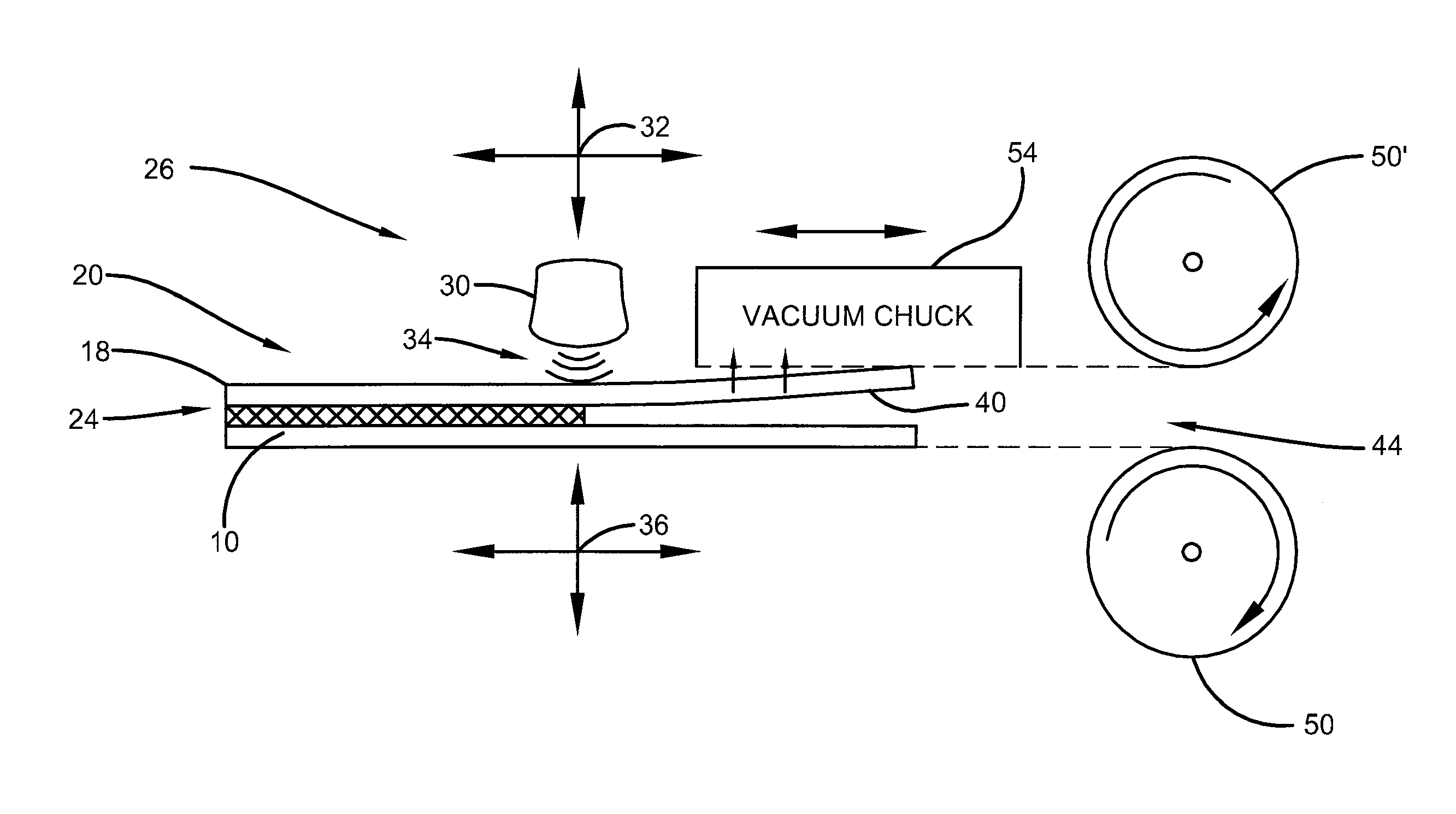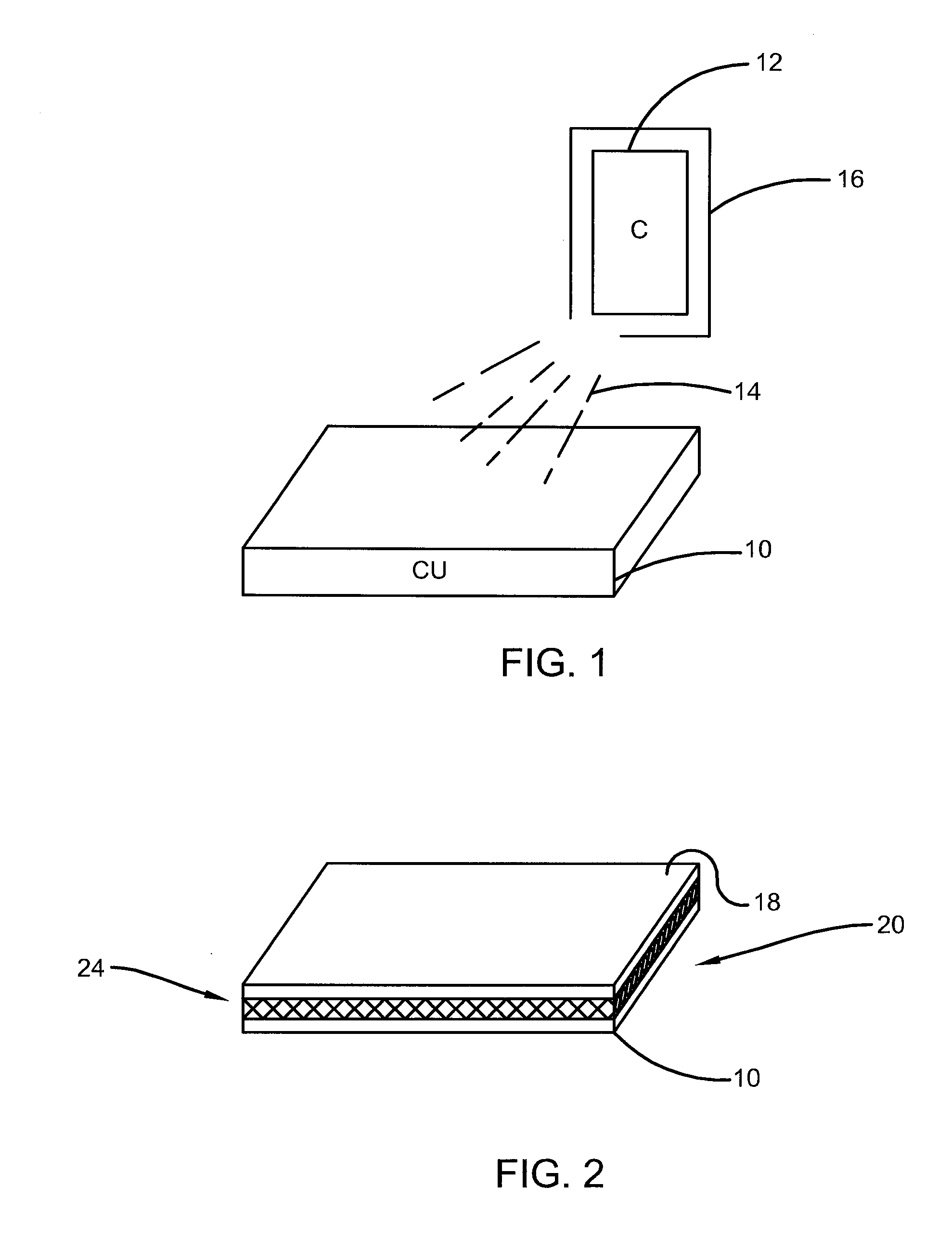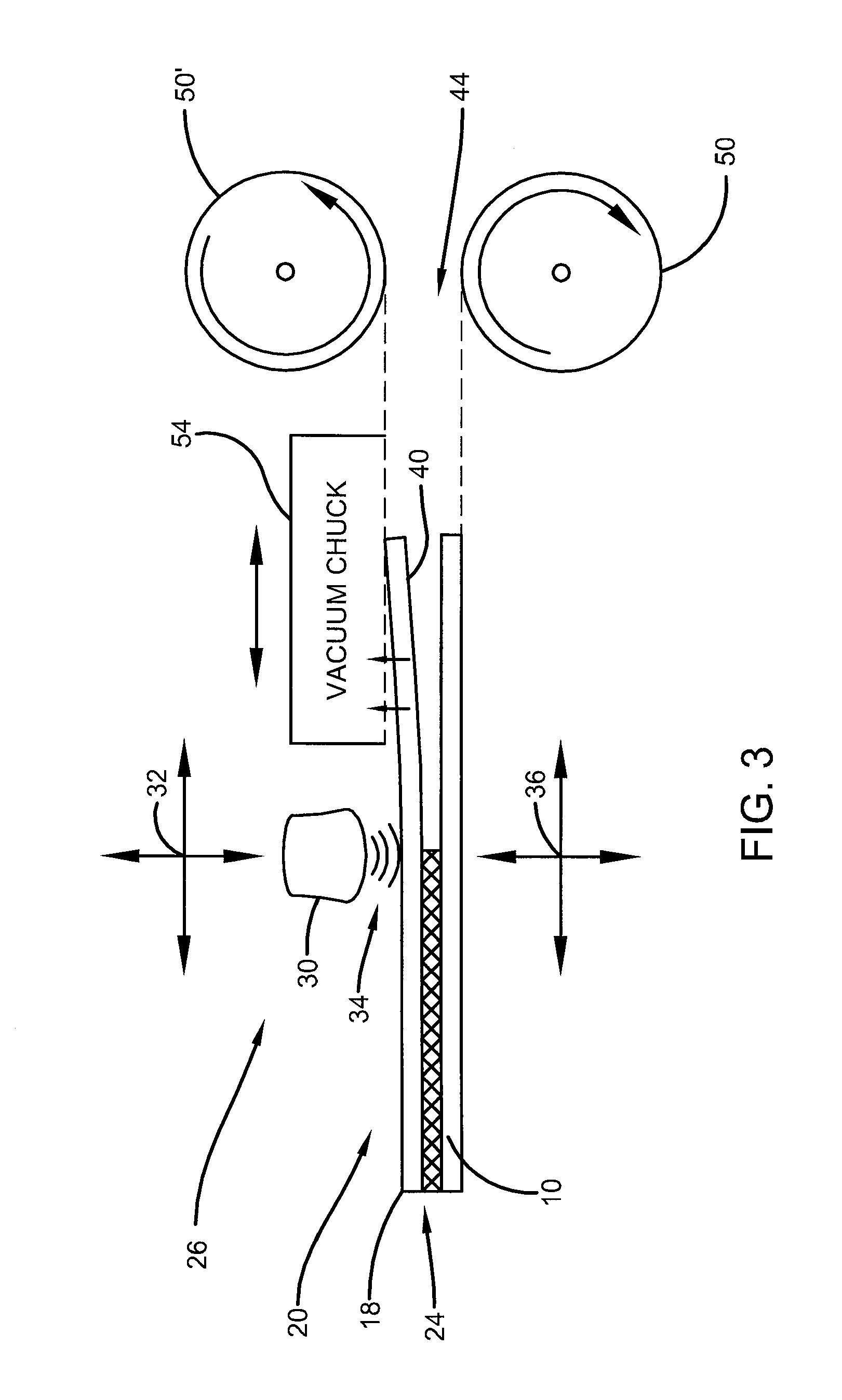Method of separating an atomically thin material from a substrate
- Summary
- Abstract
- Description
- Claims
- Application Information
AI Technical Summary
Benefits of technology
Problems solved by technology
Method used
Image
Examples
Embodiment Construction
[0026]As described above, the prior art methodology provides for the formation of a graphene sheet on a layer of substrate of cooper. However, the disclosure that follows is applicable to any atomically thin layer or layers of material that are formed on or bonded to a substrate that serves as a carrier. As such, the sheet 10 may be a copper material, any copper alloy, or any material upon which an atomically thin layer of material may be deposed, deposited or otherwise situated upon. Moreover, the sheet 10 may be treated with any type of chemical or other material that facilitates the bonding and / or separation process. The sheet 18 may be graphene, few-layer graphene, or any material which be deposed, deposited or otherwise formed on the substrate, wherein the bond 24 may be a Van der Waals interaction or force. Other types of atomically thin materials that may be disposed or formed on a substrate and require separation therefrom by the methods disclosed herein may include but are ...
PUM
| Property | Measurement | Unit |
|---|---|---|
| Force | aaaaa | aaaaa |
| Frequency | aaaaa | aaaaa |
| Bond energy | aaaaa | aaaaa |
Abstract
Description
Claims
Application Information
 Login to View More
Login to View More - R&D
- Intellectual Property
- Life Sciences
- Materials
- Tech Scout
- Unparalleled Data Quality
- Higher Quality Content
- 60% Fewer Hallucinations
Browse by: Latest US Patents, China's latest patents, Technical Efficacy Thesaurus, Application Domain, Technology Topic, Popular Technical Reports.
© 2025 PatSnap. All rights reserved.Legal|Privacy policy|Modern Slavery Act Transparency Statement|Sitemap|About US| Contact US: help@patsnap.com



